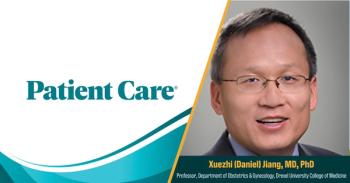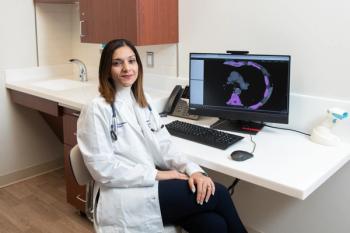
Montefiore: How Barrier-Free One-Stop HIV Care Works
By putting HIV care and other medical care services under one roof, Montefiore Medical Center by far exceeds national success standards.
The AIDS Center at Montefiore Medical Center in New York City may be the largest AIDS program in the state and one of the 10 largest in the country, but that doesn’t prevent it from focusing on one thing: individual patient needs.
It does this by putting every possible service under one roof, creating a comprehensive medical practice designed to make HIV care and other healthcare services as easy and barrier-free as possible for the more than 3,000 patients it serves each year. The results are impressive, with a 79% viral suppression rate for those in care overall; and 89% for those on antiretroviral treatment. That compares to national rates of 45% and 77%, respectively.1 It also has an 72% retention rate (defined as being seen every six months for at least two years). The national rate is about 50%.1
“One-stop shopping; that’s the thing that really makes us special,” says Medical Director Barry Zingman MD.
Its size doesn’t hurt, either. The clinical part of the program, the Center for Positive Living/Infectious Disease clinic, fills more than 10,0000 square feet and the entire floor of a building at Montefiore, with a large clinical research area one floor away.
The Montefiore clinic has several elements common to many HIV centers, including mental health and substance abuse services and case management. But its clients also benefit from an on-site pharmacy with dedicated consultant pharmacists and medication adherence counselors; a hepatitis C center for those with mono- and co-infection; sexually transmitted disease (STD) services; dermatology; gynecology; high resolution anoscopy; co-management of pregnant women by expert HIV clinicians and obstetricians; and clinical trial opportunities, all services provided with extensive support for quality improvement and data management.
Instead of making patients go offsite for key non-HIV-related specialty care, it brings specialists to the clinic whenever possible. These specialists are also trained to deal with an HIV-positive population, so they have the same mission as the rest of the clinic staff, said Dr. Zingman: “To provide excellent HIV care.”
One reason for the clinic’s success, Dr. Zingman said, is that it is a stand-alone service line for the hospital-just like maternity care or orthopedics-rather than part of another department. “That means we can make our own decisions as long they are within our budget and mission, and we feel we can accomplish them,” he said. “It gives us the ability to be creative and change our program as we see fit,” something that is unusual in the often-bureaucratic environment of large healthcare systems. This, in turn, “enables us to better control our own destiny and the destiny of our patients.”
For instance, the clinic added a pharmacy in 2000 when it realized the importance of pharmacy-based programs in improving adherence. Having a pharmacy on site, said Dr. Zingman, obliterated time and transportation barriers to filling prescriptions. It also ensured that prescriptions will be filled even if the patient’s insurance has lapsed, since the pharmacist knows that the on-site social worker will handle the problem. “A private pharmacy will rarely do that,” he said. Plus, the pharmacist can provide much-needed medication management and counseling, which studies show can improve adherence and clinical outcomes.2
The clinic also strives to take a multicultural approach, particularly important given that 95% of its population is people of color, 60% of them Hispanic. Thus most of its staff speaks Spanish.
The clinic removes another barrier to testing and access to care by encouraging walk-in visits for new and existing patients. Even walk-in patients who test positive can get a same-day appointment with a healthcare provider. Indeed, about a third of its patients enter the clinic with no appointment. It also holds evening sessions on Thursdays.
On the Prevention Side
The fact that Montefiore integrates at one location HIV care, substance abuse and mental health, and STD services-all of which increase the risk of HIV transmission-is critical to providing secondary prevention, said Dr. Zingman. In addition, the STD and hepatitis C clinics, which are available to people who have not been diagnosed with HIV, play an important role in primary prevention, he said, since clinicians can provide post-exposure prophylaxis to high-risk patients. The clinic plans to start a pre-exposure prophylaxis program this summer.
The Montefiore clinic also offers buprenorphine treatment on site for drug addiction, which requires a physician certified in its use, so patients have an alternative to methadone treatment. “It’s just another way we try to be patient-centered,” he said. To date, about 50 people are enrolled in that program.
So what is Dr. Zingman’s advice for other HIV centers striving to improve their outcomes and patient-centeredness? “Have a clear mission and make sure everyone knows it.”
Components of a Successful Interdisciplinary Program
The Montefiore clinic meets all requirements for success identified in a 2013 qualitative study of nine interdisciplinary HIV.3 They are:
• “One-stop shopping” in one building with cross-disciplinary sharing of resources, supported by electronic health records.
• Staffing with a variety of healthcare professionals who all communicate regularly. The “core” team: a primary care provider, nurse, and case manager. Also: behavioral health specialists, dentists, pharmacists, nutritionists, medical assistants and outreach workers.
• Patient centeredness, a culture of “compassion and a passion for addressing the HIV epidemic.” Culturally competent care that doesn't stigmatize or judge. Staff who solicit and act on suggestions from patients.
• Comprehensive services, including mental health and substance abuse treatment; hepatitis C co-infection management; dental care; and other specialty services.
• Continued quality-of-care assessment using accepted measures such as viral suppression and retention in care.
• Adequate financing, particularly from the federally funded Ryan White HIV/AIDS Program, which supports interdisciplinary care.
The researchers also identified four barriers to interdisciplinary care:
• Lack of funding
• Referring patients off-site for specialty care (and lack of communication with those specialists)
• Increasing numbers of patients (which will continue as more patients gain insurance through the Affordable Care Act)
• Growing patient diversity
References:
1. Centers for Disease Control and Prevention.
2. Ma A, Chen DM, Chau FM, et al.
3. Ojikutu B, Holman J, Kunches L, et al.
Newsletter
Enhance your clinical practice with the Patient Care newsletter, offering the latest evidence-based guidelines, diagnostic insights, and treatment strategies for primary care physicians.

























































































































































































































































































